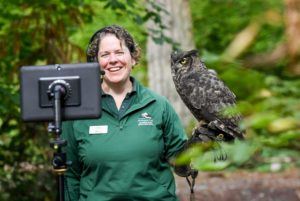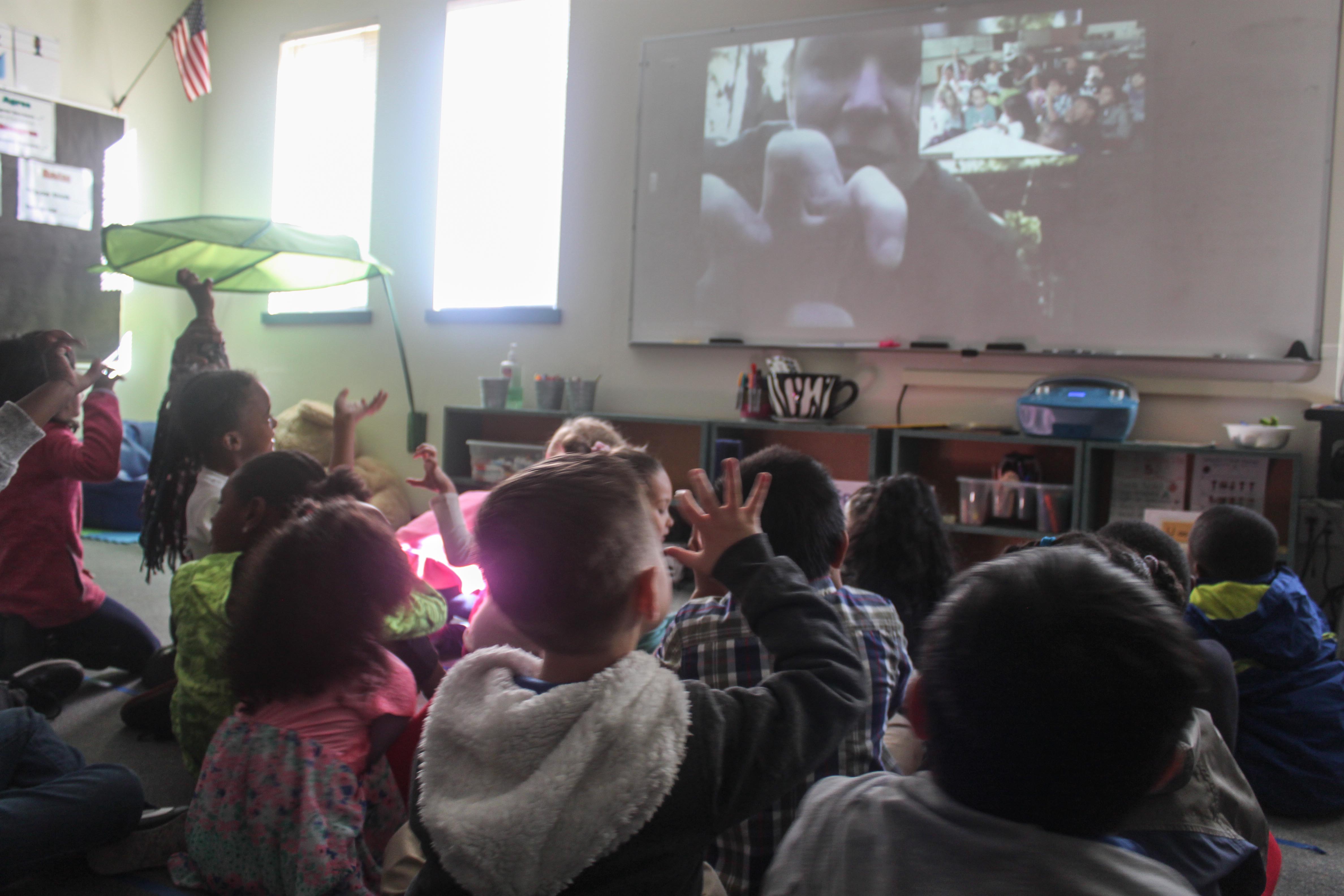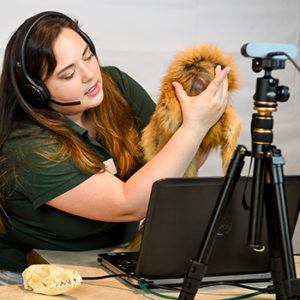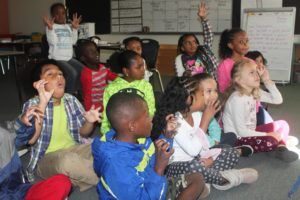Experiencing a Northwest Trek Virtual Field Trip
You could almost touch the anticipation.
Twenty first-graders from Tacoma’s Roosevelt Elementary waved excitedly to the face on the big screen in the front of their room – and as teacher Kaylin Gasparach toggled with the screen windows, the face waved back. It was Wendi Mello, keeper at Northwest Trek Wildlife Park, and as the class gasped, the owl on her arm slowly turned its head and blinked.
Mello – and the owl – were taking the class on a raptor adventure full of science, learning and animals – a Northwest Trek Virtual Field Trip.
Learning Northwest

“The great thing about Virtual Field Trips is that they allow students and teachers to experience and learn about native Northwest wildlife in this unique setting, even if they can never come here themselves,” explains Jessica Moore, education curator at Northwest Trek, who helped design the experience. “Maybe they’re halfway around the world. Maybe their school can’t do a regular field trip. Or maybe they just want to enhance their science curriculum in a really engaging way.”
In just over a year, around 70 classes around the world have taken a Virtual Field Trips. The experience happens via video conferencing on an online platform called Zoom – easy to join and operate. In the Roosevelt first-grade room, the trip began with naturalist and field trip specialist MacKenzie Schaefer in front of the camera, sharing maps and photographs with the students to set the scene and explain just where the Northwest is – and what it means to be a native animal.
“Who can tell me some of the animals they recognize from the picture?” asked Schaefer.
Hands shot up. “A snake!” “A goat.” “A bear!”
“You’re right – that’s a gopher snake, and a mountain goat,” answered Schaefer on screen. “We have those animals here at Trek. But that animal that looks like a bear – he’s actually a fisher – kind of like a small weasel.”
Videoconferencing an owl

After a few more minutes of questions and answers, with Schaefer keeping explanations light and engaging, she switched the camera view to Mello, ready with an iPad on a tripod near the great horned owl enclosure. The adventure had begun.
“Hi everyone!” called Mello, surrounded by towering evergreens. “Can you hear me? I’m standing where the animals are. And I want you to meet a really cool hunter. Can you hook your beak like his?”
As Mello explained an owl’s two main hunting tools – beak and talons – the first-graders hooked their own fingers and spread their “talons” in imitation, calling out food suggestions for the owl and wiggling in sheer excitement at seeing the large, gray-feathered bird perching on Mello’s gauntleted arm.
The field trip continued down a path to observe a mallard duck, with its flat beak and very different diet.
Nature, zoomed-in

Finally, the camera returned to Schaefer, who held up a skull and bird talon, right in front of the camera.
“Whoa!!” called the class in unison, eyes wide.
Next came a skull.
“What bird do you think this skull is from, a brown and white bird with a reddish tail?” Schaefer asked.
There was a pause. Then:
“A hawk!” came the cry.
“Wow, great answer!” complimented Gasparach, clearly impressed by her students.
After fielding some highly detailed questions from the class, Schaefer summarized what they’d learned about the animals they’d seen and studied.
“And next time you’re outside and you see a bird, ask yourself what kind of beak and talons do they have?” she finished. “And what might they eat?”
“This is such a great program,” said Gasparach, after the screen had closed and the students had begun a coloring exercise. “These kids are all used to Facetime, so it’s nice for them to see animals as well. And they definitely learn about raptors and food chains.”
Science and Fun

As well as complimenting her own science curriculum and meeting NGSS science standards, the Northwest Trek Virtual Field Trip is fairly simple technologically, with Schaefer sending an email link to the application as well as giving a practice run-through in advance.
It also gave Gasparach’s class a chance most of them didn’t get in real life: to visit a local wildlife park.
“This is so beneficial, and cost-effective too,” she said.
But for the students, the main thing was the animals.
“I got to think about birds and how they eat different things,” explained Zikora McGill. “Seeing the owl was my favorite!”
“I liked the talon!” smiled David Latu shyly. “How the bird uses it to grab things to eat, and maybe even feed to its babies.”
Would he like to see Northwest Trek for real some day?
“Yeah!!” came the answer.
FIND OUT MORE: Learn about Virtual Field Trips and make bookings here.
-Rosemary Ponnekanti, NW Trek